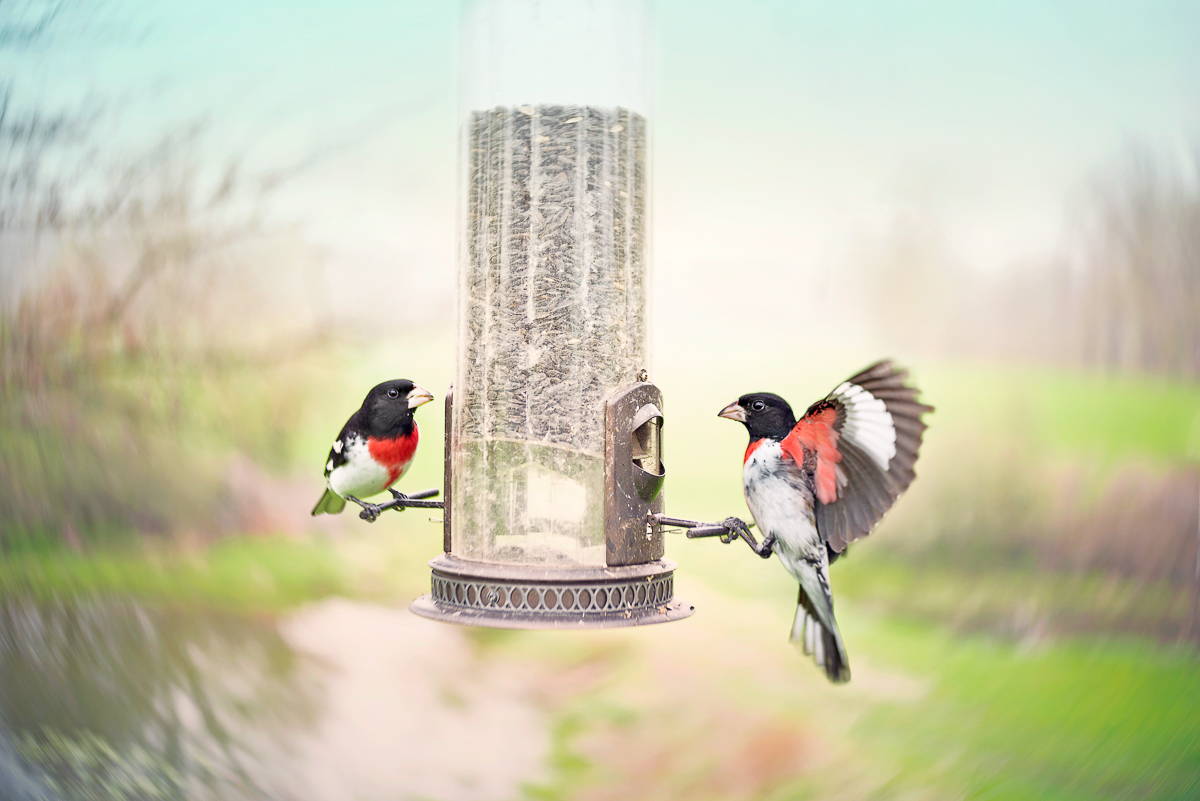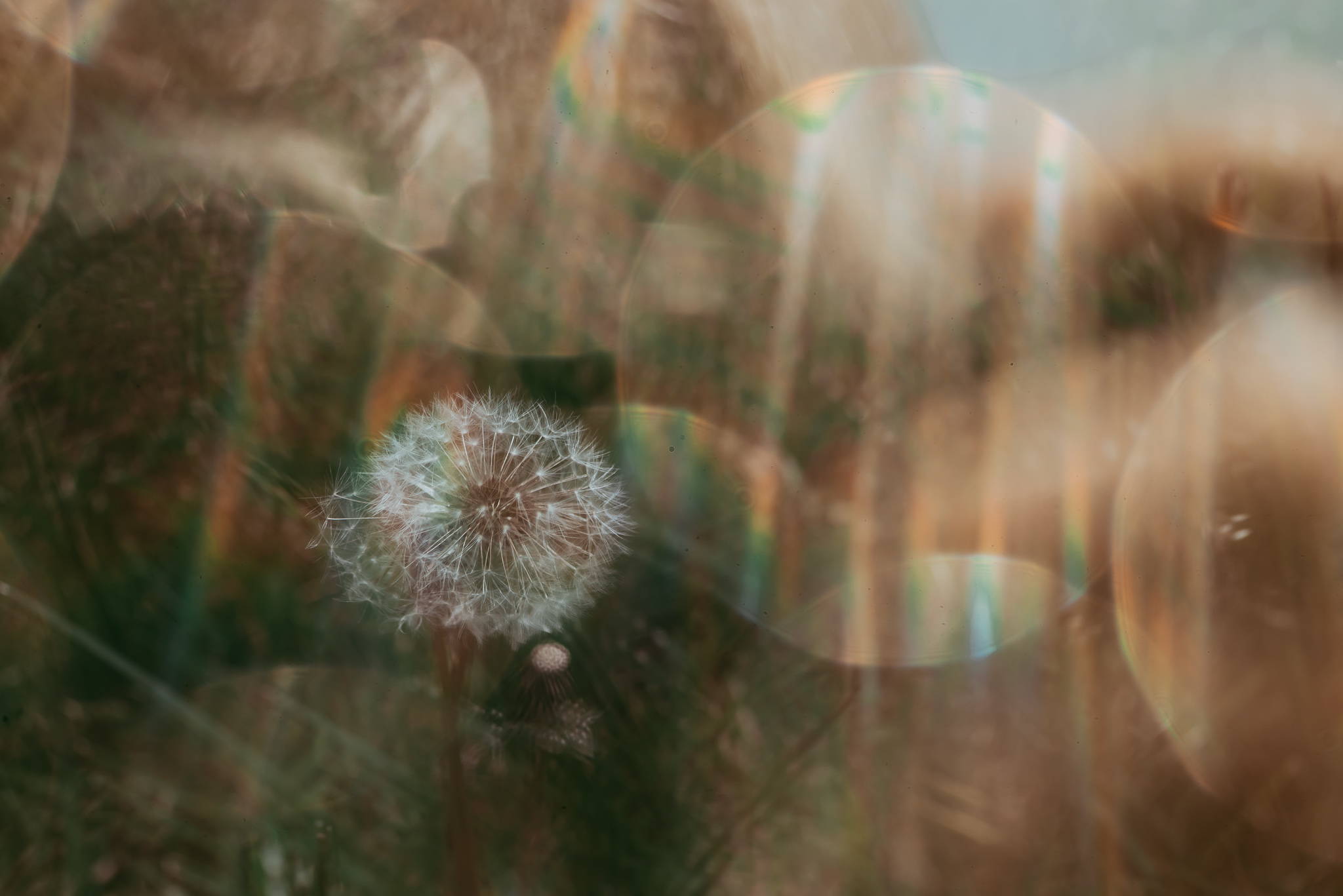Backyard birding is something I enjoy. It's relaxing and also fun. I've learned so much about birds since I started feeding them in my backyard.
One of my favourite things to do is record migration dates. I record the date each species arrives during spring migration. It's interesting to compare arrival dates over the years. I know I can expect my first Baltimore Oriole and Rose-breasted Grosbeak between May 1 - 4. They always arrive within a few minutes, which is interesting. Some birds are year-round residents, so I always feed in winter when there's snow on the ground here in Ontario, Canada.
I've learned to recognize some individual birds because of their habits or markings, and this has taught me that the same birds will often come to the same location every year.
Where to locate the feeder
I have a few trees relatively close to my living room window, so I like to hang my feeders from these trees. You can mount your feeders on poles if you don't have trees. Keep your feeders full if you want to keep the birds interested. Regular cleaning will also help prevent diseases from being spread amongst the birds.
Birds spook easily, so you'll want to place your feeder in a spot that allows you to take some shots inside the house. Make sure your feeder is within shooting distance of your lens. If it's too far away, you'll have to do a lot of cropping, which isn't ideal. Hold your lens up against the glass when shooting from the inside to avoid reflections. I use a lens hood and put it right against the window.
An important thing to consider when feeding birds is window strikes. I have a large picture window facing my feeder, the birds see the reflection of the trees in the window, and if the window isn't treated to prevent strikes, they fly into it at full speed, thinking the reflections are other trees. It's heartbreaking to lose birds this way, and it's almost completely preventable. There are several proven methods for preventing strikes, I use dots on the outside of my windows, and this method is extremely effective.
Consider your background
I try to place the feeder in a spot that will provide a pleasant backdrop for my shots. A nice background makes for a much nicer photo.
"I have a large picture window facing my feeder, the birds see the reflection of the trees in the window, and if the window isn't treated to prevent strikes, they fly into it at full speed, thinking the reflections are other trees."
What time of day is best
Birds come to the feeder at all times of the day but mornings and early evening tend to be the busiest, which is perfect because these hours also provide the best lighting for photography. Our Northern Cardinals are always the earliest to arrive in the morning and last to leave in the evening. They visit before sunrise and have their last feed when it's almost dark outside.
Camera Settings
Aperture
I like to use a wide aperture because this helps isolate the subject from the background. I typically use an aperture between f/2.8 and f/4. You'll use narrower apertures if you prefer more of the background in focus.
Shutter speed
If you want to freeze the action, keep your shutter speed at a minimum of 1/1000 because birds tend to move extremely fast, and slower shutter speeds can result in blurry images if the bird moves. I often use slower shutter speeds to capture some movement and get a more creative result.
If you don't shoot in manual mode
If you're unfamiliar with shooting in manual mode, try using the sports option on your camera. If your camera doesn't have this setting, don't worry, the most important thing is to enjoy what you're doing. You can learn about the settings when you're ready.
Where to focus
I use single-point focus and focus on the eyes of the bird; generally speaking, you won't have an acceptable shot if the eyes aren't in focus. Most cameras have a variety of focus modes. Like focus tracking, my suggestion is to familiarize yourself with the various focus modes and experiment.
How to get creative shots
I prefer to use my Lensbaby lenses for creative shots. I love the unique images they produce. They can give you a photo that stands apart from the crowd.
When shooting creatively, I want to get close to the birds. I find the best way to do this without scaring them is to set the interval timer function on my camera and place it on a tripod close to the feeder. I set the timer to take a shot every few seconds for about one hour. You can get very close with a tripod. Most birds don't seem overly concerned with it since it's an inanimate object. Some are a bit curious.
Lensbabies are manual focus lenses, so I focus on where I know the birds will land. The feeder will swing a bit when the birds land or if there's wind, so getting good focus can be tricky, and there will be out-of-focus shots, but it's so worth it when you get a good photo.
Before leaving your camera unattended on the tripod, consider wind, precipitation, temperature, and predators, like squirrels, who might be interested in the camera. I come inside but keep an eye on things to ensure my camera is safe. I haven't had a bird land on my equipment, but I daresay it could happen, so using a cover of some sort may be a good idea.
Capturing photos of birds at my feeders is a fun and documentary experience for me. It's not about nailing the perfect shot. It’s about creating photos that mean something to me and provide memories from year to year.
Want your shots featured by Lensbaby?
Be bold and shoot extraordinary! Make sure to tag your photos on IG with #Lensbaby, #ShootExtraordinary, and let us know what gear you’re using. 📸
Jan Heastont
Jan is a Canadian photographer, originally from Scotland. She lives on a farm in beautiful Haldimand County, Ontario near the shores of Lake Erie. The places she has lived and the people in her life, have inspired her to follow her dreams and pursue her love of photography.




Leave a comment
All comments are moderated before being published.
This site is protected by hCaptcha and the hCaptcha Privacy Policy and Terms of Service apply.